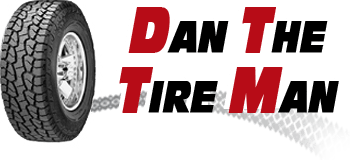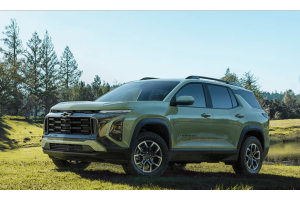
Understanding Tire Wear in AWD Vehicles
Have you noticed that the front tires of your all-wheel drive (AWD) vehicle wear out faster than the rear tires? This happens because the front tires handle most of the braking and steering. Factors like irregular tire rotation, misalignment, aggressive driving, and underinflation can also speed up this wear. While replacing only two tires might seem like a cost-effective solution, it can lead to more significant problems down the line. But what about replacing just one tire? Let’s explore this question and debunk some common AWD tire replacement myths.
The Risks of Mismatched Tires on AWD Vehicles


Replacing just one or two tires on your AWD vehicle can cause damage to the drivetrain. As tires wear down, their diameter decreases. If you replace only one tire, the new tire will have a larger diameter compared to the worn ones. This discrepancy forces the older tires to spin faster to keep up with the new one, leading to uneven stress on the drivetrain.
The drivetrain transfers power from the engine to the wheels. Different-sized tires, even if labeled the same size, can stress this system, eventually causing issues. For optimal performance and to avoid damage, all four tires should be replaced simultaneously, ensuring they are the same size and have equal traction.
Why Replacing Just One Tire Is Not Ideal
Opting to replace only one tire might seem like a budget-friendly choice, but it can lead to bigger, costlier problems. Mismatched tires can accelerate wear and tear on your drivetrain and electronic systems. When one tire spins faster than the others, the traction control system might mistakenly sense slippage, redirecting more power to that tire.
Consequences of Not Replacing All Four Tires
As tires wear, their circumference reduces. Replacing only one tire on an AWD vehicle means the new tire will be larger than the others. Your vehicle’s owner’s manual likely warns against mismatched tires, as they can damage the drivetrain and traction control system, leading to expensive repairs.
Follow the Owner’s Manual and Seek Expert Advice
Do you know when to change your tires? Your vehicle’s owner’s manual is a valuable resource for tire safety and recommendations. Before deciding to replace just one tire on your AWD vehicle, consult the manual. It will likely advise replacing all four tires simultaneously.
Check both the tire and transmission sections of the manual. Ignoring these recommendations can result in costly damages. A reputable tire dealer will always refer to the owner’s manual. At Dan The Tire Man, we can help you choose the best set of tires for your AWD vehicle.
Additionally, consider the manual’s tire rotation suggestions. Regular tire rotation helps even out tire wear and extends their lifespan. If you have a full-size spare, include it in a 5-tire rotation to maximize tire usage.
What to Do if You Can’t Afford to Replace All Tires at Once
Now we know that mismatched tires on AWD vehicles often cause drivetrain damage. But that doesn’t help you get 4 or 5 tires you need today if you’re cash strapped or credit challenged. That’s where we come in. We have so many easy tire financing solutions to keep you on the road. WWDD (What Would Dan Do?) Use one of our no credit needed lease-to-own programs such as Progressive Leasing, Koalafi or Snap Finance. BUT here’s the thing…it can be expensive unless you pay it off in the first 90 days. If you can do that, you’re golden. You have no hard credit check, you only pay the price on the website plus the initial payment of $49, but you get an extra 3 months to pay for your tires and you still get them up front! Short on cash but have good credit? Try Affirm at checkout or use your credit card. We’ve got you covered!





